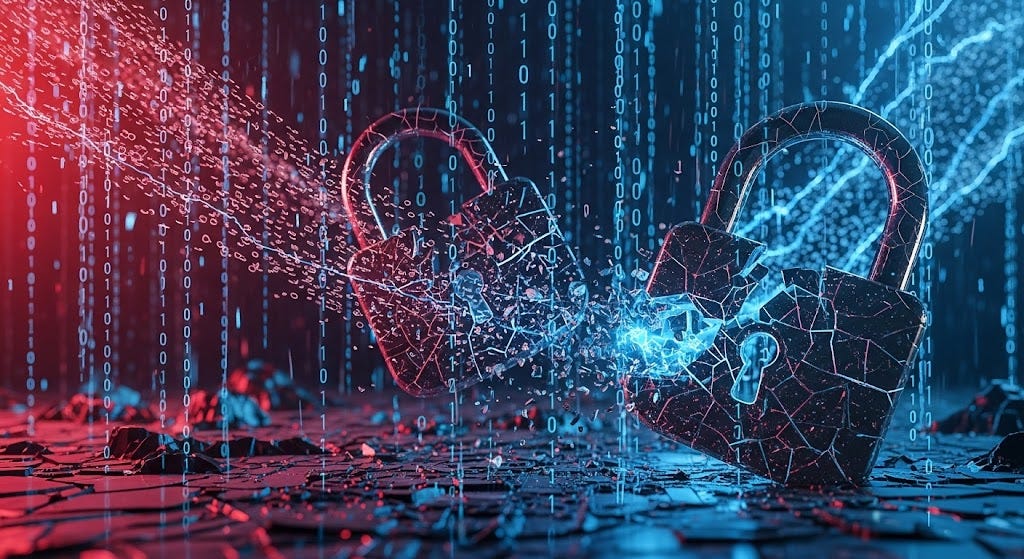Two Passwords for Every Human Are for Sale. Here's What I Did.
The REAL Story Behind the 16 Billion Passwords Leaked
A password leak big enough to cover half the planet quietly went public recently. It is not a single hack, but a quilt of old breaches, infostealer logs, and one misconfigured cloud bucket, all sewn together into a tidy, searchable archive of roughly 16 billion credentials. The numbers are big, yes, but the secrets are the same tired ones we've been losing track of for years.
A Quiet Morning on The Porch
I noticed it over coffee. The headline said two passwords for every human were loose in the wild. I clicked past the noise and landed on Cybernews, the same folks who flagged the massive “Mother of All Breaches” (MOAB) earlier this year. They traced this new pile to 30-plus sources, mostly infostealers like RedLine and Raccoon.
A year ago, a hacker named ObamaCare dumped ten billion plain-text passwords under the RockYou banner. Those files never went away; they only changed hands. This is the raw material for credential stuffing attacks.
Following the Trails
The story of this leak is a story of aggregation. We saw reports of an open database spilling millions of records from government addresses to bank logins. The bucket vanished after a researcher’s email, but the data itself drifted into the larger sea. None of these stories were about new breaches. They were about new collections.
Axios framed the archive as a “blueprint for mass exploitation,” and I can’t say they’re wrong. Tom’s Hardware called it “two accounts for every human alive.” Forbes reminded readers to move to passkeys, fast. BleepingComputer rightly pushed back, noting that nothing here is truly new. The underlying problem remains the same: people are still managing their own passwords incorrectly.
The Incident Response Checklist
My morning coffee turned into a triage session. First, I cross-referenced our company domains against the known breach data using our threat intelligence feeds, which pull from services like Have I Been Pwned. Then, the real work began:
Force-Expire Sessions: I used our identity management system to revoke all active user sessions globally. This invalidates any stolen session cookies that attackers might use to bypass multi-factor authentication (MFA).
Trigger Conditional Access Policies: I tightened our conditional access rules, flagging logins from unusual locations or non-compliant devices for mandatory password resets.
Scan for Malware: I initiated an updated scan across all endpoints with our EDR (Endpoint Detection and Response) tool. Infostealers are the source, so you have to check the fleet for the source of the infection.
It’s a standard playbook, but you run it every time. You can't assume you are unaffected.
The Proactive Solution for Your Business
While the checklist above is how you react, the best defense is proactive. For years, we've relied on 1Password as the foundation of our security stack. It solves the core problem by generating, storing, and deploying strong, unique credentials for every single service.
As a 1Password partner, we help businesses deploy it enterprise-wide. This isn't just about protecting your work accounts. When you set up a plan with us, you also get free 1Password family accounts that allow up to five of your family members. This is a huge benefit! It allows your employees to secure their personal lives, which in turn reduces the risk of a breach bleeding into your business environment. You secure your company and your team's families at the same time.
If you're tired of the endless cycle of password resets and want to move your team to a more secure system, let's connect. We can get you set up with a plan that fits your business.
A Thought Before Lunch
Leaks like this feel dramatic on paper, yet they land with a thud in the industry. The fix is not another urgent headline. It is quieter: deploying the right tools and building security habits so robust they become muscle memory. It starts with a single decision to stop managing keys in your head or on spreadsheets and move to a secure, centralized system.
I emptied my mug, watched the steam fade, and felt confident knowing our keys—and our clients' keys—are managed properly.

